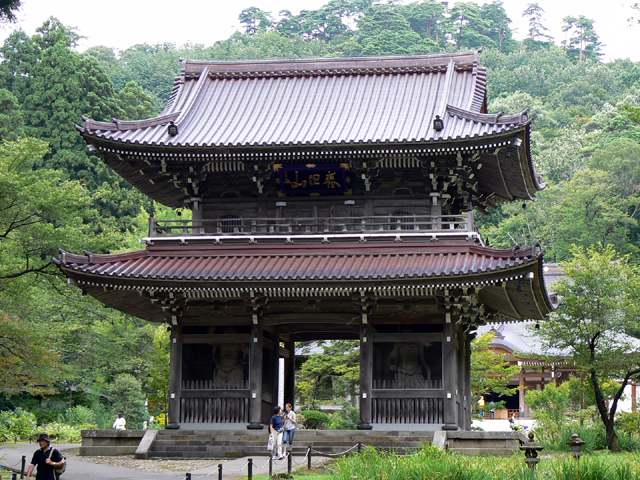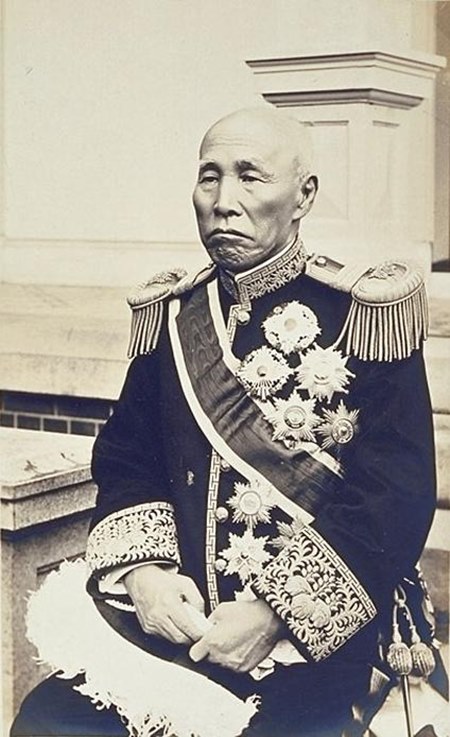|
Aizu Yaichi
was a Japanese poet, calligrapher and historian. Biography Yaichi was born in the Furumachi area of Niigata, Niigata, and was a professor emeritus of ancient Chinese and Japanese art at Waseda University. His focus was mostly on Buddhist art of the Asuka and Nara eras. In 1926 he advocated for the creation of an art history museum at Waseda University, and eventually collected a vast number of works. In 1951 he received the 2nd Yomiuri Prize The is a literary award in Japan. The prize was founded in 1949 by the Yomiuri Shinbun Company to help form a "strong cultural nation". The winner is awarded two million Japanese yen and an inkstone. Award categories For the first two years, .... External links http://www.waseda.jp/aizu/ References 1881 births 1956 deaths People from Niigata (city) Yomiuri Prize winners 20th-century Japanese poets Buddhist artists {{Japan-writer-stub ... [...More Info...] [...Related Items...] OR: [Wikipedia] [Google] [Baidu] |
Niigata Prefecture
is a prefecture in the Chūbu region of Honshu of Japan. Niigata Prefecture has a population of 2,227,496 (1 July 2019) and is the fifth-largest prefecture of Japan by geographic area at . Niigata Prefecture borders Toyama Prefecture and Nagano Prefecture to the southwest, Gunma Prefecture to the south, Fukushima Prefecture to the east, and Yamagata Prefecture to the northeast. Niigata is the capital and largest city of Niigata Prefecture, with other major cities including Nagaoka, Jōetsu, and Sanjō. Niigata Prefecture contains the Niigata Major Metropolitan Area centered on Niigata with a population of 1,395,612, the largest metropolitan area on the Sea of Japan coast and the twelfth-largest in Japan. Niigata Prefecture is part of the historic Hokuriku region and features Sado Island, the sixth largest island of Japan in area following the four main islands and Okinawa Island. History Until after the Meiji Restoration, the area that is now Niigata Prefectu ... [...More Info...] [...Related Items...] OR: [Wikipedia] [Google] [Baidu] |
Asuka Period
The was a period in the history of Japan lasting from 538 to 710 (or 592 to 645), although its beginning could be said to overlap with the preceding Kofun period. The Yamato polity evolved greatly during the Asuka period, which is named after the Asuka region, about south of the modern city of Nara. The Asuka period is characterized by its significant artistic, social, and political transformations, having their origins in the late Kofun period. The introduction of Buddhism marked a change in Japanese society. The Asuka period is also distinguished by the change in the name of the country from to . Naming The term "Asuka period" was first used to describe a period in the history of Japanese fine-arts and architecture. It was proposed by fine-arts scholars and Okakura Kakuzō around 1900. Sekino dated the Asuka period as ending with the Taika Reform of 646. Okakura, however, saw it as ending with the transfer of the capital to the Heijō Palace of Nara. Although histori ... [...More Info...] [...Related Items...] OR: [Wikipedia] [Google] [Baidu] |
Yomiuri Prize Winners
Yomiuri may refer to: * Yomiuri Giants, a professional baseball team based in Tokyo, Japan * Yomiuri Nippon Symphony Orchestra, based in Tokyo, Japan * Yomiuri Open, a golf tournament on the Japan Golf Tour until 2006 * Yomiuri International, a golf tournament on the Far East/Asian Circuit from 1962 to 1971 * Yomiuri Pro Championship, an invitational golf tournament held from 1952 to 1961 * ''Yomiuri Shimbun The (lit. ''Reading-selling Newspaper'' or ''Selling by Reading Newspaper'') is a Japanese newspaper published in Tokyo, Osaka, Fukuoka, and other major Japanese cities. It is one of the five major newspapers in Japan; the other four are ...'', a conservative Japanese newspaper * Yomiuri Telecasting Corporation, a Japanese television network * Yomiuri FC, one of the former names of Tokyo Verdy, a Japanese football club. {{Disambiguation ... [...More Info...] [...Related Items...] OR: [Wikipedia] [Google] [Baidu] |
People From Niigata (city)
A person ( : people) is a being that has certain capacities or attributes such as reason, morality, consciousness or self-consciousness, and being a part of a culturally established form of social relations such as kinship, ownership of property, or legal responsibility. The defining features of personhood and, consequently, what makes a person count as a person, differ widely among cultures and contexts. In addition to the question of personhood, of what makes a being count as a person to begin with, there are further questions about personal identity and self: both about what makes any particular person that particular person instead of another, and about what makes a person at one time the same person as they were or will be at another time despite any intervening changes. The plural form "people" is often used to refer to an entire nation or ethnic group (as in "a people"), and this was the original meaning of the word; it subsequently acquired its use as a plural form of p ... [...More Info...] [...Related Items...] OR: [Wikipedia] [Google] [Baidu] |
1956 Deaths
Events January * January 1 – The Anglo-Egyptian Condominium ends in Sudan. * January 8 – Operation Auca: Five U.S. evangelical Christian missionaries, Nate Saint, Roger Youderian, Ed McCully, Jim Elliot and Pete Fleming, are killed for trespassing by the Huaorani people of Ecuador, shortly after making contact with them. * January 16 – Egyptian leader Gamal Abdel Nasser vows to reconquer Palestine. * January 25– 26 – Finnish troops reoccupy Porkkala, after Soviet troops vacate its military base. Civilians can return February 4. * January 26 – The 1956 Winter Olympics open in Cortina d'Ampezzo, Italy. February * February 11 – British spies Guy Burgess and Donald Maclean resurface in the Soviet Union, after being missing for 5 years. * February 14– 25 – The 20th Congress of the Communist Party of the Soviet Union is held in Moscow. * February 16 – The 1956 World Figure Skating Championships open in Garmisch, West Germany. * February 22 – Elvis P ... [...More Info...] [...Related Items...] OR: [Wikipedia] [Google] [Baidu] |
1881 Births
Events January–March * January 1– 24 – Siege of Geok Tepe: Russian troops under General Mikhail Skobelev defeat the Turkomans. * January 13 – War of the Pacific – Battle of San Juan and Chorrillos: The Chilean army defeats Peruvian forces. * January 15 – War of the Pacific – Battle of Miraflores: The Chileans take Lima, capital of Peru, after defeating its second line of defense in Miraflores. * January 24 – William Edward Forster, chief secretary for Ireland, introduces his Coercion Bill, which temporarily suspends habeas corpus so that those people suspected of committing an offence can be detained without trial; it goes through a long debate before it is accepted February 2. * January 25 – Thomas Edison and Alexander Graham Bell form the Oriental Telephone Company. * February 13 – The first issue of the feminist newspaper ''La Citoyenne'' is published by Hubertine Auclert. * February 16 – The Canad ... [...More Info...] [...Related Items...] OR: [Wikipedia] [Google] [Baidu] |
Yomiuri Shimbun
The (lit. ''Reading-selling Newspaper'' or ''Selling by Reading Newspaper'') is a Japanese newspaper published in Tokyo, Osaka, Fukuoka, and other major Japanese cities. It is one of the five major newspapers in Japan; the other four are the ''Asahi Shimbun'', the '' Chunichi Shimbun ( Tokyo Shimbun)'' the '' Mainichi Shimbun'', and the '' Nihon Keizai Shimbun''. It is headquartered in Otemachi, Chiyoda, Tokyo.' It is a newspaper that represents Tokyo and generally has a conservative orientation. It is one of Japan's leading newspapers, along with the Osaka-based liberal ( Third way) Asahi Shimbun and the Nagoya-based Social democratic Chunichi Shimbun. It is published by regional bureaus, all of them subsidiaries of The Yomiuri Shimbun Holdings, Japan's largest media conglomerate by revenue and the second largest media conglomerate by size behind Sony,The Yomiuri Shimbun Holdings is the largest media conglomerate by revenue in Japan, while Sony is Japan's largest m ... [...More Info...] [...Related Items...] OR: [Wikipedia] [Google] [Baidu] |
Yomiuri Prize
The is a literary award in Japan. The prize was founded in 1949 by the Yomiuri Shinbun Company to help form a "strong cultural nation". The winner is awarded two million Japanese yen and an inkstone. Award categories For the first two years, awards were granted in four categories: novels and plays, poetry, literary criticism, and scholarly studies. In 1950, novels and plays were split to form a total of five categories. This was further reorganized in 1966 to form six categories: novels, plays, essays and travel journals, criticism and biography, poetry, and academic studies and translation. Award winners The ''Yomiuri Shimbun The (lit. ''Reading-selling Newspaper'' or ''Selling by Reading Newspaper'') is a Japanese newspaper published in Tokyo, Osaka, Fukuoka, and other major Japanese cities. It is one of the five major newspapers in Japan; the other four are ...'' maintains an official list of current and past prize recipients. Fiction Drama Poetry and ha ... [...More Info...] [...Related Items...] OR: [Wikipedia] [Google] [Baidu] |
Nara Period
The of the history of Japan covers the years from CE 710 to 794. Empress Genmei established the capital of Heijō-kyō (present-day Nara, Nara, Nara). Except for a five-year period (740–745), when the capital was briefly moved again, it remained the capital of Japanese civilization until Emperor Kanmu established a new capital, Nagaoka-kyō, in 784, before moving to Heian-kyō, modern Kyoto, a decade later in 794. Japanese society during this period was predominantly agricultural and centered on village life. Most of the villagers followed Shinto, Shintō, a religion based on the worship of natural and ancestral spirits named ''kami.'' The capital at Nara was modeled after Chang'an, the capital city of the Tang dynasty. In many other ways, the Japanese upper classes patterned themselves after the Chinese, including adopting the Chinese writing system, Chinese fashion, and a Chinese version of Buddhism. Literature Concentrated efforts by the Emperors of Japan, imperial court ... [...More Info...] [...Related Items...] OR: [Wikipedia] [Google] [Baidu] |
Buddhist Art
Buddhist art is visual art produced in the context of Buddhism. It includes depictions of Gautama Buddha and other Buddhas and bodhisattvas, notable Buddhist figures both historical and mythical, narrative scenes from their lives, mandalas, and physical objects associated with Buddhist practice, such as vajras, bells, stupas and Buddhist temple architecture. Buddhist art originated in the north of the Indian subcontinent, in modern India, Pakistan and Afghanistan, with the earliest survivals dating from a few centuries after the historical life of Siddhartha Gautama from the 6th to 5th century BCE. As Buddhism spread and evolved in each new host country, Buddhist art followed in its footsteps. It developed to the north through Central Asia and into Eastern Asia to form the Northern branch of Buddhist art, and to the east as far as Southeast Asia to form the Southern branch of Buddhist art. In India, Buddhist art flourished and co-developed with Hindu and Jain art, with cave t ... [...More Info...] [...Related Items...] OR: [Wikipedia] [Google] [Baidu] |
Poet
A poet is a person who studies and creates poetry. Poets may describe themselves as such or be described as such by others. A poet may simply be the creator ( thinker, songwriter, writer, or author) who creates (composes) poems ( oral or written), or they may also perform their art to an audience. The work of a poet is essentially one of communication, expressing ideas either in a literal sense (such as communicating about a specific event or place) or metaphorically. Poets have existed since prehistory, in nearly all languages, and have produced works that vary greatly in different cultures and periods. Throughout each civilization and language, poets have used various styles that have changed over time, resulting in countless poets as diverse as the literature that (since the advent of writing systems) they have produced. History In Ancient Rome, professional poets were generally sponsored by patrons, wealthy supporters including nobility and military officials. F ... [...More Info...] [...Related Items...] OR: [Wikipedia] [Google] [Baidu] |
Waseda University
, mottoeng = Independence of scholarship , established = 21 October 1882 , type = Private , endowment = , president = Aiji Tanaka , city = Shinjuku , state = Tokyo , country = Japan , students = 47,959 , undergrad = 39,382 , postgrad = 8,577 , faculty = 2,218 full-time3,243 part-time , administrative_staff = 1,257 full-time119 part-time , campus = Urban , former_names = Tōkyō Senmon Gakkō , colors = Maroon , free_label = Athletics , free = 43 varsity teams , affiliations = Universitas 21APRU URA AALAU , mascot = Waseda Bear , website = , footnotes = , address = , logo = , module = , abbreviated as , is a private research university in Shinjuku, Tokyo. Founded in 1882 as the ''Tōkyō Senmon Gakkō'' by Ōkuma Shigenobu, the school was formally renamed Waseda University in 1902. The university has numerous notable alumni, including nine prime ministers of Japan, a number of important figures of Japanese literature, including Haruki Murakami ... [...More Info...] [...Related Items...] OR: [Wikipedia] [Google] [Baidu] |


_1938.jpg)




